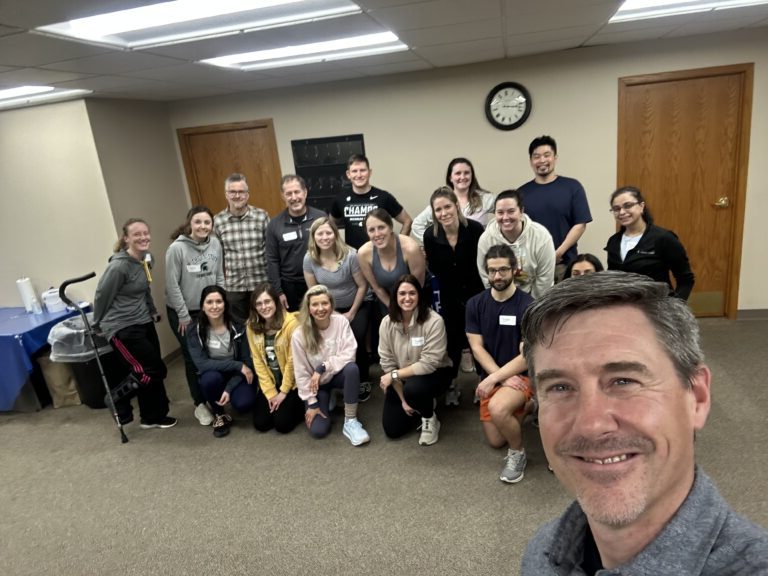As James Taylor sang, Carolina was in everyone’s mind this past weekend and “there ain’t no doubt in no one’s mind” that Break Through Physical Therapy was the ideal location to host Cervical Revolution. This may have been one of the most energizing and clinically energized courses I have ever taught. Having Jen Poulin, DPT, PRC, Chris Poulin, ATC, PRT, and Lisa Mangino, DPT, PRC in attendance brought a level of clinical dialogue and expertise to one of the highest levels in an integrative setting that can be achieved in a course.
Jen and Lisa are PRI faculty members and the discussion ranged from the Human Evolution course taught by Lisa and developmental aspects in children to the Pelvis, Myokin and Postural Respiration courses that Jen has taught and how all of these primary and secondary courses connect to the cervical spine, cranium, and occlusal system. Chris has such a wide background in athletics and performance and since there were several strength and conditioning personal in attendance, the need for freedom of the cervical spine especially with rotational “power” sports like golf, baseball, and basketball was a critical topic.
The fundamentals of this course start at atlas and occipital bone in a flexion position driven by the muscles of the Temporal Mandibular Cervical Chain. The are eight muscles in this chain that stabilize the neck, cranium and jaw, and when balanced, work together and in harmony to maintain upright balance and position without the overuse of one side of these muscles especially with chewing food. Since we are all asymmetrical human beings that have to manage gravity and upright movement, the right TMCC becomes dominant and overtime and an over-reliance creates compensations throughout the entire skeleton. This course is an introduction to “top down” dominant influences that ultimately create stress and strain in the cranial, occlusal and visual systems and are considered pathologic if left untreated.
From one articulation, the atlas and occipital bone, not only is the brain stem directly influenced but the entire cranial and occlusal system is directed and positioned as well. This course integrates many professional disciplines including physical therapy, chiropractic, osteopathy and dentistry with an emphasis on the stomatognathic system as it relates to the skeletal system.
Having Jen, Chris, and Lisa as seasoned PRI clinicians during lab was one large clinical discussion with everyone in the course engaged and involved with application of these secondary course objectives. I want to thank Chris and Jen for providing their facility, time, and clinical experience in making this weekend one of the best Cervical Revolutions yet! Thank you Lisa Mangino for attending and asking many questions, with Jen as well, that helped to direct and clarify so many topics in this course so that the rest of the students could “rest and digest” critical topics and understand them. Thank you Steven Blair, DPT, CSCS, PRC for your questions and clarifications for so many topics including the Standing Alternating Cervical Cranial Expansion technique. Your precision and description helped move this course along in a most needed and helpful way. Thank you Janie from Breakthrough for helping start the days with set up. And thank you to every student from the chiropractic, physical therapy, dentistry, and strength and conditioning professions for taking time out of your busy lives to attend Cervical Revolution!
-Skip George



















